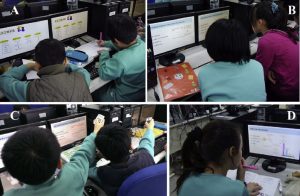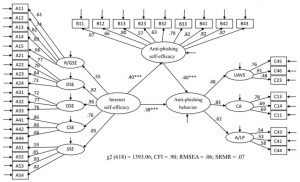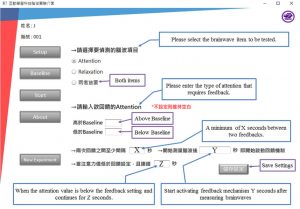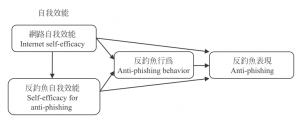





1. Sun, J. C.-Y., & Yeh, K. P.-C. (2017). The effects of attention monitoring with EEG biofeedback on college students’ attention and self-efficacy: The case of anti-phishing instructional materials. Computers & Education, 106, 73-82. doi:10.1016/j.compedu.2016.12.003
2. Chou, H.-L., & Sun, J. C.-Y. (2017). The moderating roles of gender and social norms on the relationship between protection motivation and risky online behavior among in-service teachers. Computers & Education, 112, 83-96. doi:10.1016/j.compedu.2017.05.003
3. Sun, J. C.-Y., Kuo, C.-Y., Hou, H.-T., & Lin, Y.-Y. (2017). Exploring learners’ sequential behavioral patterns, flow experience, and learning performance in an anti-phishing educational game. Educational Technology & Society, 20(1), 45-60.
4. Sun, J. C.-Y., Yu, S.-J., Lin, S. S. J., & Tseng, S.-S. (2016). The mediating effect of anti-phishing self-efficacy between college students’ Internet self-efficacy and anti-phishing behavior and gender difference. Computers in Human Behavior, 59, 249-257.
5. Sun, J. C.-Y., & Chen, A. Y.-Z. (2016). Effects of integrating dynamic concept maps with Interactive Response System on elementary school students’ motivation and learning outcome: The case of anti-phishing education. Computers & Education, 102, 117-217. doi:10.1016/j.compedu.2016.08.002
6. Sun, J. C.-Y., & Lee, K.-H. (2016). Which teaching strategy is better for enhancing anti-phishing learning motivation and achievement? The concept maps on tablet PCs or worksheets? Educational Technology & Society, 19(4), 87-99.
7. 游師柔與孫之元(2014)。大學生的網路自我效能對反釣魚行為與表現之影響,人文社會學報,10(2),113-139。